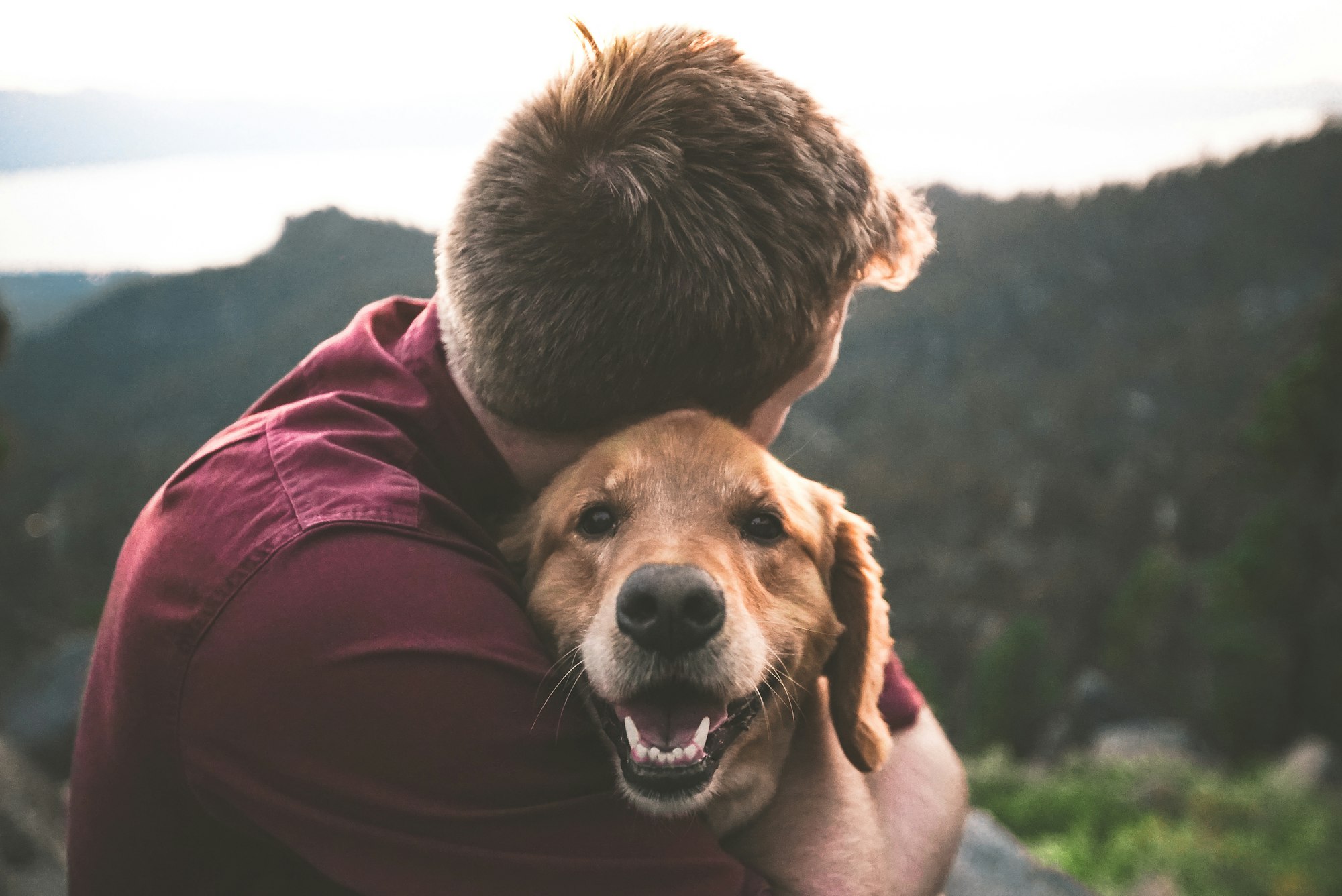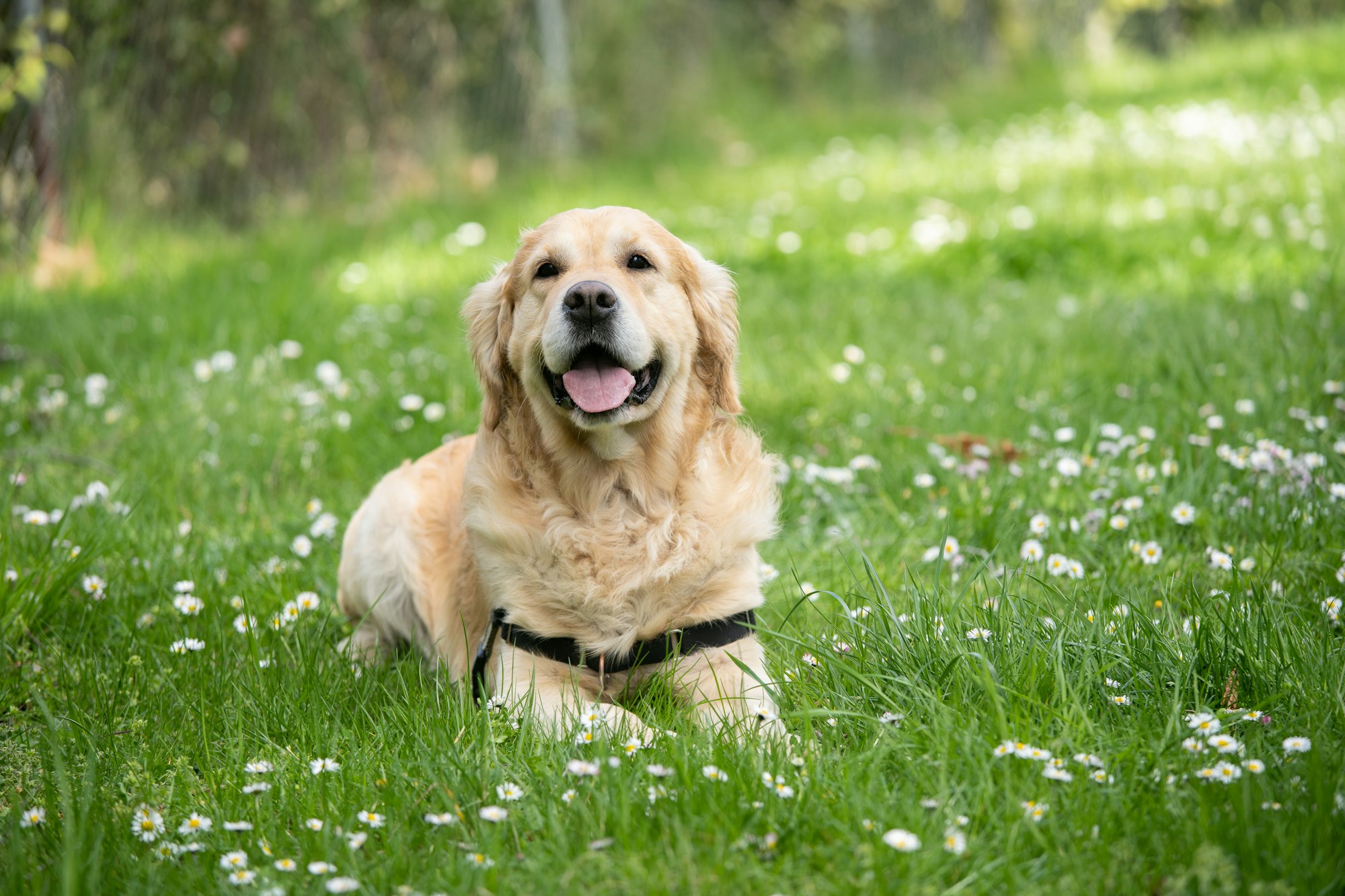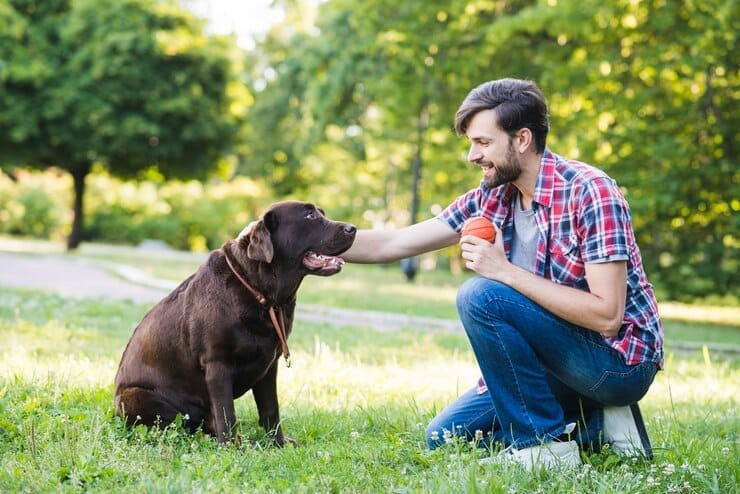Genetics, the blueprint of life, serves as the foundation for understanding the biological makeup and diversity of all living organisms, including animals. It encompasses the study of genes, heredity, and the variation of inherited characteristics. In animals, genetics not only determines physical attributes like coat color, size, and shape but also influences behavior, health, and susceptibility to diseases.

When it comes to man's best friend, the dog, genetics plays a pivotal role in shaping the vast array of breeds we are familiar with today. Each breed, with its unique characteristics and traits, is a living testament to the complex interplay of genetic factors. Among the most fundamental genetic elements in dogs, as in other animals, are chromosomes—the thread-like structures located within the nucleus of every cell that carry genetic information.
Understanding the chromosomal makeup of dogs is crucial for multiple reasons. It aids in deciphering the genetic instructions that give rise to the diverse canine population, from the tiny Chihuahua to the majestic Great Dane. Moreover, knowledge of canine chromosomes is invaluable for identifying genetic diseases and conditions, guiding responsible breeding practices, and advancing veterinary care.
This article aims to delve into the fascinating world of canine genetics. We will explore the number of chromosomes dogs possess and the significance of this count in the broader context of genetics. The discussion will extend to the implications of chromosomal information for dog breeds, health, and the ongoing research that continues to unveil the genetic mysteries of our loyal companions. Join us as we embark on this genetic journey to understand our canine companions at the most fundamental level.
Understanding Chromosomes
Chromosomes are the carriers of genetic information within almost all living organisms, acting as the blueprint for development, growth, and function. Structurally, chromosomes are long strands of DNA wound around proteins called histones, which help in packaging DNA into compact, organized units. This configuration ensures that DNA is accurately replicated and distributed during cell division, a critical process for growth and repair in organisms.
Each chromosome contains many genes, the basic units of heredity, which are sequences of DNA that code for proteins. These proteins perform a vast array of functions, from building cellular structures to catalyzing biochemical reactions, thus determining an organism's physical characteristics and physiological processes. The complete set of chromosomes in an organism constitutes its genome, which carries the instructions for its development, survival, and reproduction.
The number and structure of chromosomes vary significantly across different species, reflecting the diversity of life. For instance, humans have 46 chromosomes, organized into 23 pairs, while fruit flies have only 8 chromosomes. Plants can have a much higher number, with certain species of ferns possessing over 1,200 chromosomes. This variation is not necessarily indicative of an organism's complexity. For example, despite having fewer chromosomes, dogs (with 78 chromosomes) can exhibit more complex behaviors and a greater variety of physical forms than humans.
In comparing chromosomes across species, scientists can gain insights into evolutionary relationships and genetic conservation. For instance, despite the apparent differences between humans and dogs, there is a surprising amount of genetic similarity, with many genes being conserved across species. This conservation highlights the shared evolutionary pathways and fundamental biological mechanisms that operate across the animal kingdom.
Understanding the role and structure of chromosomes in different species provides a foundation for studying genetics. It allows researchers to explore how genetic variations lead to diversity within and between species, offering insights into evolution, disease mechanisms, and the development of new medical and breeding strategies.
Canine Chromosomes: The Basics
In the world of canine genetics, one of the most fundamental aspects to understand is the chromosomal composition of dogs. Dogs have a total of 78 chromosomes, which is significantly more than humans. These chromosomes are arranged in 39 pairs, with one chromosome from each pair inherited from each parent. This genetic endowment is what makes each dog unique, influencing everything from physical appearance to behavioral tendencies.
The canine karyotype, or the complete set of chromosomes, is a detailed representation of these 78 chromosomes, organized and visualized through techniques such as chromosome staining and microscopy. In a karyotype, chromosomes are typically arranged by size and shape in a standardized layout, which helps geneticists and veterinarians identify and study specific chromosomes, genes, and potential abnormalities.

Each pair of chromosomes in the canine karyotype includes autosomes and sex chromosomes. Autosomes are chromosome pairs 1 through 38 and are the same in both males and females. They carry the majority of genetic information responsible for the non-sexual characteristics of the dog. The 39th pair consists of the sex chromosomes, X and Y, which determine the dog's sex. Females have two X chromosomes (XX), while males have one X and one Y chromosome (XY).
Understanding the canine karyotype is crucial for several reasons. It serves as a basis for genetic studies aimed at improving dog health, breeding, and understanding the genetic basis of various traits and diseases. For example, by examining the karyotype, scientists can identify chromosomal abnormalities that may lead to genetic disorders, such as certain forms of cancer or hereditary diseases specific to certain breeds.
Furthermore, the study of canine chromosomes contributes to our understanding of canine evolution and domestication. By comparing the karyotypes of different breeds, researchers can trace lineage and genetic divergence, shedding light on how diverse breeds have emerged over time through selective breeding and natural evolution.
In summary, the canine karyotype is a window into the genetic world of dogs, offering insights into their health, behavior, and history. With 78 chromosomes in their genetic makeup, dogs present a fascinating subject for geneticists and breeders alike, as they continue to unravel the complexities of canine genetics.
Genetic Composition of Dogs
While the chromosome count provides a foundational understanding of canine genetics, the true complexity and diversity of dogs lie in their genetic composition. The genetic makeup of a dog encompasses not just the number of chromosomes, but also the vast array of genes those chromosomes contain. These genes dictate everything from coat color and ear shape to more subtle traits like temperament and predisposition to certain health conditions.
Beyond Chromosome Count
The genetic landscape of dogs is remarkably diverse, a testament to the extensive selective breeding and natural adaptation that have occurred over thousands of years. Each gene within the canine genome can exist in different forms, known as alleles, which contribute to the wide variety of observable characteristics, or phenotypes, among dogs. For instance, the gene for coat color can have multiple alleles, resulting in the spectrum of coat colors seen in different breeds.
Moreover, many canine traits are polygenic, meaning they are influenced by more than one gene, and often, environmental factors play a role as well. For example, a dog's size is determined by a combination of genetic factors involving multiple genes, as well as nutrition and health during the dog's growth period.
Genetics and Physical Traits
Physical traits in dogs, such as snout length, tail curl, fur type, and color, are directly tied to their genetic code. Selective breeding has amplified these traits within specific breeds, leading to the distinct physical characteristics that define each breed. For example, the short legs of a Dachshund and the wrinkled skin of a Shar-Pei are both results of specific genetic variations that have been selectively bred for.
However, it's essential to recognize that selective breeding for physical traits can sometimes carry unintended consequences. Certain genetic configurations that produce desirable physical traits can also be linked to hereditary health issues. For example, the same genes that give Bulldogs their distinctive flat faces can also lead to breathing difficulties.
Genetics and Behavioral Traits
Behavioral traits in dogs, such as herding, guarding, and retrieving, have also been heavily influenced by genetics. Breeds were often developed with specific purposes in mind, leading to the reinforcement of behavioral traits through selective breeding. For instance, Border Collies exhibit a strong herding instinct, which is a result of selective breeding for sheep herding capabilities.
Recent studies have begun to uncover the genetic bases for not only these complex behaviors but also for simpler traits like temperament and trainability. While the environment and upbringing play significant roles in a dog's behavior, genetics provides the underlying predisposition for these traits.
The Interplay of Genetics, Environment, and Health
It's important to note that while genetics lays the foundation, the expression of genetic potential is significantly influenced by environmental factors. Nutrition, exercise, socialization, and overall care can all impact the physical and behavioral development of dogs, showcasing the intricate interplay between genetics and environment.
Understanding the genetic composition of dogs and how it influences their physical and behavioral traits is crucial for breeders, veterinarians, and pet owners alike. It allows for better breeding practices, informed health care, and a deeper appreciation of the diversity and complexity of our canine companions.

Chromosomes and Canine Breeds
The diversity among dog breeds is not just a matter of different appearances and behaviors; it also reflects a deep genetic foundation rooted in the variations of their chromosomes. These genetic variations contribute to the unique attributes of each breed, from the tiny, alert Pomeranian to the large, gentle Great Dane. Understanding how chromosome variations impact different dog breeds sheds light on the genetic engineering that has taken place through centuries of selective breeding.
Genetic Variations Among Breeds
While all dogs share the same number of chromosomes (78), the genetic variation within these chromosomes is what leads to the vast diversity among breeds. Specific gene mutations and combinations have been selected over generations to enhance or diminish certain traits, effectively sculpting the modern dog breeds we recognize today.
For example, the difference in size among dog breeds, one of the most noticeable traits, is influenced by variations in the Insulin-like Growth Factor 1 (IGF1) gene among others. Small breeds like the Chihuahua have different alleles of this gene compared to large breeds like the Saint Bernard, leading to their size disparity.
Case Studies
- Genetic Uniqueness of Purebreds: Purebred dogs are bred to meet specific standards set by kennel clubs, which often involves selective breeding within a closed gene pool. This practice can amplify certain genetic traits, both desirable and undesirable. For instance, the Dalmatian's unique spotted coat is the result of a specific genetic mutation. However, this same genetic exclusivity can lead to the propagation of hereditary health issues. For example, Boxers are known to have a higher predisposition to certain cancers due to their limited genetic diversity.
- Genetic Diversity of Mixed Breeds: Mixed-breed dogs, on the other hand, benefit from a broader genetic pool, which can lead to increased genetic diversity. This diversity often results in what is known as "hybrid vigor," where mixed-breed dogs exhibit fewer inherited diseases and conditions. A study comparing purebred and mixed-breed dogs found that mixed breeds are less likely to develop a number of inherited disorders, though they are not immune to genetic diseases.
Special Consideration: Designer Breeds
Designer breeds, like the Labradoodle or the Cockapoo, are created by intentionally crossing purebred dogs to combine desirable traits from both breeds. While these crosses can lead to dogs with the hoped-for physical and temperamental traits, they can also inherit health issues from both parent breeds. The genetic outcome of designer breeds can be less predictable than purebreds due to the mixing of diverse genetic backgrounds.

Implications for Breeding and Health
The relationship between chromosomes and breed traits highlights the importance of responsible breeding practices that prioritize health and well-being over aesthetic or behavioral traits. Genetic testing and screening have become invaluable tools in identifying potential health issues and guiding breeding decisions to maintain or improve breed health.
In conclusion, the intricate dance of chromosomes and genetic variations plays a crucial role in the diversity of dog breeds. By understanding and respecting these genetic principles, breeders and owners can ensure the continued health and happiness of our canine companions, whether purebred, mixed breed, or designer hybrids.
Challenges and Ethical Considerations
The field of canine genetics, while offering vast potential for improving the health and welfare of dogs, also presents several challenges and ethical dilemmas. These primarily revolve around breeding practices, genetic manipulation, and the implications of genetic testing and intervention. Navigating these issues requires a careful balance between leveraging genetic advancements for the benefit of dogs and ensuring that ethical standards are upheld to prevent harm.
Challenges in Canine Genetic Research
- Limited Genetic Diversity: In purebred dogs, the closed gene pools and selective breeding practices aimed at preserving specific traits can lead to a reduction in genetic diversity. This limitation can make it challenging to eliminate hereditary diseases without introducing new genetic issues.
- Unintended Consequences of Genetic Selection: Selective breeding for certain physical traits can inadvertently perpetuate hidden genetic disorders. For example, breeding for specific coat colors or patterns linked to certain genes can increase the prevalence of associated health issues.
- Complexity of Polygenic Traits: Many canine traits and diseases are influenced by multiple genes (polygenic), making it difficult to predict the outcomes of breeding programs aimed at enhancing or mitigating these traits.
Ethical Breeding Practices
Ethical breeding involves more than just producing dogs that meet a physical or behavioral standard. It requires a commitment to prioritizing the health, well-being, and genetic diversity of the breed. This entails:
- Conducting comprehensive genetic testing to identify potential health risks.
- Avoiding breeding practices that prioritize aesthetics over health, such as extreme physical traits that compromise a dog's well-being.
- Ensuring genetic diversity to reduce the risk of inherited diseases.
Genetic Manipulation
Advancements in genetic engineering and CRISPR technology have opened up possibilities for directly editing the canine genome. While these technologies could theoretically eliminate genetic diseases, they also raise significant ethical concerns:
- Welfare Concerns: The long-term impacts of genetic modifications on dogs' health and welfare are largely unknown.
- Biodiversity: Altering the genetic makeup of dogs could reduce genetic diversity, potentially leading to unforeseen consequences.
- Access and Equity: Advanced genetic interventions may be expensive, limiting access to those with the means to afford them, and potentially widening the gap between different sectors of the dog community.

Genetic Testing and Intervention
The widespread availability of genetic testing for dogs offers valuable insights into a dog's genetic predispositions but also raises ethical questions:
- Privacy and Data Use: Concerns arise regarding who has access to a dog's genetic information and how it is used, particularly by breeders, insurance companies, and veterinary professionals.
- Actionability: Identifying a genetic predisposition to a disease poses the dilemma of what actions to take, especially if no treatment or prevention is available.
- Informed Decisions: The interpretation of genetic test results requires expertise. Misinterpretation can lead to unnecessary worry for pet owners or drastic measures like euthanasia based on potential predispositions.
Navigating these challenges requires a multidisciplinary approach involving geneticists, veterinarians, breeders, and dog owners. Establishing ethical guidelines and policies that prioritize the health and welfare of dogs while embracing the benefits of genetic advancements is crucial for the responsible development of canine genetics.
Conclusion
Exploring the realm of canine genetics reveals the intricate interplay between the 78 chromosomes of dogs and their diverse physical and behavioral traits, highlighting the significance of genetic diversity and the impact of selective breeding. This journey underscores the need for ongoing research to address genetic diseases and ethical considerations surrounding breeding practices and genetic interventions.
As our understanding of canine genetics deepens, it fosters a more informed and compassionate approach to dog care and breeding, emphasizing the importance of balancing scientific advancements with ethical responsibility. This evolving knowledge not only enhances the health and well-being of our canine companions but also strengthens the bond we share with them, reminding us of our duty to navigate the complexities of genetics with care and respect.
FAQs
- How many chromosomes do dogs have?
- Dogs have a total of 78 chromosomes, arranged in 39 pairs, which include both autosomes and sex chromosomes, influencing their physical traits and behaviors.
- Why is understanding canine chromosomes important?
- Understanding canine chromosomes is crucial for identifying genetic diseases, guiding responsible breeding practices, improving health care, and gaining insights into canine evolution and diversity.
- How do genetic variations affect different dog breeds?
- Genetic variations within chromosomes lead to the diverse traits seen across dog breeds, with specific gene mutations and combinations being selectively bred over generations to achieve desired physical and behavioral characteristics.
- What are the ethical considerations in canine genetic research?
- Ethical considerations include the implications of selective breeding, the potential consequences of genetic manipulation, and the responsible use of genetic testing to ensure the welfare and diversity of dog populations.
- Can genetic testing predict health issues in dogs?
- Genetic testing can identify predispositions to certain health conditions, enabling proactive management and care, though it also raises ethical questions about how this information is used and interpreted.
- What is the significance of polygenic traits in dogs?
- Polygenic traits, influenced by multiple genes, contribute to the complexity of canine characteristics, including behaviors and susceptibility to certain diseases, highlighting the intricate relationship between genetics and phenotype.
- How does genetic knowledge impact dog breeding and care?
- Advances in genetic knowledge empower breeders and owners to make informed decisions about breeding practices, health care, and the management of genetic diseases, ultimately enhancing the well-being of dogs and enriching the human-canine bond.

